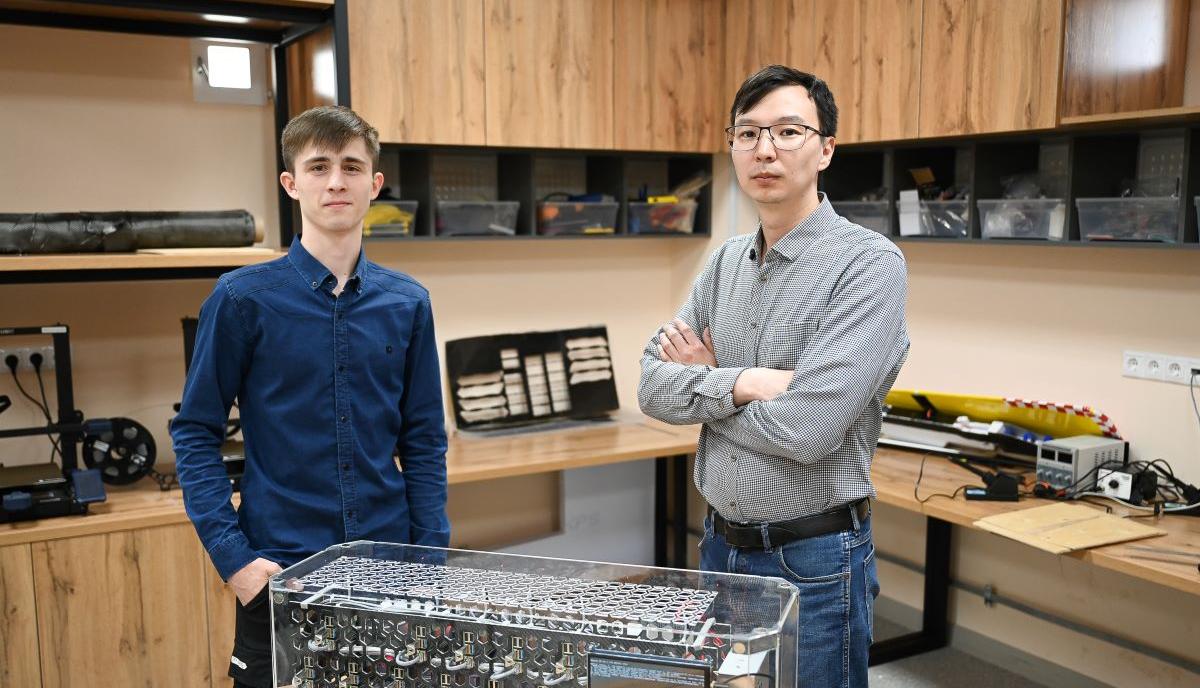Students in the Tomsk State University Faculty of Physics and Engineering have developed a miniature analog of the computer cluster SKIF Cyberia. Its advantages include compact size and low cost and power consumption, as well as the presence of the full batch of computational nodes. Students can use it for learning the ins and outs of a supercomputer and working on DevOps technologies, learning assignments, and projects.
The supercomputer’s compact analog was manufactured in the Project Park of the TSU Faculty of Physics and Engineering. The supercomputer is 76х26х31 cm, weighs 8 kg, and uses 350 W power. The cluster relies on ARM, a promising computer architecture that the big IT companies such as Intel or Microsoft are investing in. The cluster will become a readily available tool for students to get the basic resources necessary for working on various projects, Kirill Kostyushin, head of the Project Park, shares.
“The cluster will initially be used for hosting student projects. At a later stage we expect to combine several technological solutions into one. The options include combining the cluster with a wind turbine and solar panel power station—another project that our students are working on. That way students will be able to familiarize themselves with creating data centers with zero carbon footprint,” Kirill Kostyushin added.

According to the head of the project, Anuar Kagenov, Department of Applied Aeromechanics associate professor, the training-oriented supercomputer is a good “sandbox” for students, who can use it for mastering DevOps technologies and working on small- and large-scale university projects. Despite being just slightly bigger than a regular PC, the cluster includes the full batch of computational nodes.
”The cluster consists of 23 low-cost Raspberry Pi microcomputers, 22 of which can be used for various purposes. Raspberry Pi is a pocket-size, power-efficient decision,” explains the project head. “Fail safety of its components is achieved thanks to the docker container orchestration, a program ensuring automated container management. If something happens to one of the containers, the orchestration system registers the error and restores it. A cluster like that fits university needs very well: It can be used for hosting, creating additional services, or launching study programs.”
The manufacturing process took about a year, shares one of the project members, Aleksandr Yustus, 3rd-year Faculty of Physics and Engineering student.
“At first we had the idea: We got a rough estimate of the end result, how long it would take to achieve it, and what steps should be made. We discussed these with the experts in the area, and they greenlit our idea. Then we studied how the SKIF Cyberia computer operates and moved on to trying to build something of our own. I worked on the 3D models of the upcoming cluster, and that process itself was exciting for me. Then we moved on to creating the workpieces, perfecting the initial design. We went through three designs before finalizing the project.”
Students made the cluster case from plexiglass and printed the circuit board mounts using a 3D printer. The frame for mounting the computational nodes was manufactured using a composite material developed at TSU with vacuum infusion.